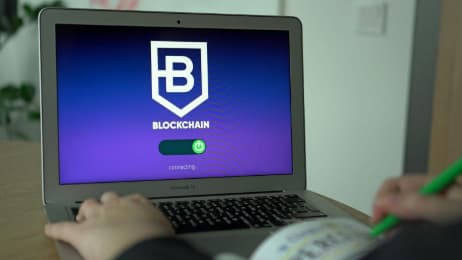The blockchain industry has reached an inflection point. While traditional systems demand that you expose your data to prove something about yourself, a cryptographic revolution is quietly reshaping how verification works. Zero-Knowledge Proofs (ZKPs) are enabling startups to build systems where users can prove facts without revealing the underlying information—a capability that seemed impossible just years ago.
Picture walking into a bar and proving you’re over 21 without showing your birthdate, name, or any other personal information. A green light confirms your age eligibility while keeping your identity completely private. This is the essence of ZKPs in action, and in 2025, this technology is moving from theoretical concept to practical implementation across finance, gaming, and identity verification systems.
The Technical Foundation Driving Real-World Applications
Zero-Knowledge Proofs operate on three fundamental principles that make them revolutionary for blockchain applications. Completeness ensures that if a statement is true, an honest prover will always convince the verifier. Soundness guarantees that a dishonest prover cannot convince the verifier of a false statement. Most importantly, the zero-knowledge property ensures the verifier learns nothing beyond the validity of the statement itself.
Two primary implementations dominate the current landscape. ZK-SNARKs (Zero-Knowledge Succinct Non-Interactive Arguments of Knowledge) create compact proofs that can be verified in milliseconds, making them ideal for blockchain applications where every byte of data costs money. However, they require a trusted setup ceremony that, if compromised, could undermine the entire system’s security.
ZK-STARKs (Zero-Knowledge Scalable Transparent Arguments of Knowledge) eliminate this trusted setup requirement, offering greater transparency and quantum resistance. The National Institute of Standards and Technology (NIST) aims to standardize ZKPs in 2025, signaling institutional recognition of their importance for future cryptographic systems.
Financial Services: Deutsche Bank’s Institutional Breakthrough
The most significant validation of ZKP technology comes from Deutsche Bank’s Project DAMA 2, a groundbreaking initiative that demonstrates how traditional finance can leverage blockchain while maintaining regulatory compliance. Built on zkSync technology, this Layer 2 solution represents Europe’s largest bank’s commitment to tokenized assets.
A minimum viable product is expected to be ready by 2025, subject to regulatory approval. The project addresses critical challenges that have prevented institutional adoption of public blockchains: unknown transaction validators, risks of payments to sanctioned entities, and unexpected protocol changes.
What makes DAMA 2 revolutionary is its dual approach. It provides regulators with “super admin rights” to monitor all fund movements while using zero-knowledge proofs to maintain transaction privacy from other network participants. This balance between transparency for compliance and privacy for competitive advantage could unlock trillions in institutional capital currently sitting on the sidelines.
The numbers tell a compelling story about zkSync’s institutional traction:
| Metric | Value | Growth Rate |
| Tokenized RWAs on zkSync | $1.9 billion | 25% of all on-chain RWAs |
| DeFi TVL | $430 million | 177% month-on-month (Jan 2025) |
| Transaction Speed Target | 10,000 TPS | 100x improvement over Ethereum |
| Transaction Cost Target | $0.0001 | 99.9% reduction from mainnet |
| Active dApps | 270+ | Growing ecosystem |
Gaming Revolution: From Players to Owners
The gaming industry presents unique challenges that ZKPs elegantly solve. Players demand ownership of in-game assets, fair gameplay verification, and privacy protection—all while maintaining the fast, responsive experience gamers expect.
ZKcandy, a gaming-focused Layer 2 built on zkSync, exemplifies this transformation. ZKcandy has already achieved significant traction, with over 2.4 million wallets created during its open testnet phase within just two weeks. The platform currently has more than 25 game titles in development, leveraging Southeast Asia’s largest game developer’s portfolio of 500+ games and 300 million gamers worldwide.
Sophon takes a different approach, utilizing zkSync’s Validium technology to keep most data off-chain while maintaining Ethereum’s security guarantees. This architecture enables real-time gaming experiences that would be impossible on traditional blockchains, where every action costs money and takes seconds to confirm.
The technical advantages for gaming are clear:
- Instant transaction finality for seamless gameplay
- Negligible fees enabling microtransactions
- Provably fair random number generation
- Private player statistics and strategies
- Cross-game asset portability
Identity Verification: Worldcoin’s Global Ambition
Perhaps no application of ZKPs has generated more discussion than Worldcoin’s iris-scanning identity system. As of late April 2025, the circulating supply reached approximately 1.3 billion WLD, representing 13 percent of the total supply. The network has attracted over 26 million users, with more than 12.5 million individuals completing the Orb verification process.
The system works through an elegant cryptographic dance. When users scan their iris with Worldcoin’s Orb device, the biometric data is converted into an iris code and immediately deleted. A zero-knowledge proof is generated that proves the user is unique without storing or revealing any biometric information. This proof becomes their World ID, enabling them to verify their humanity across applications without exposing their identity.
- Biometric Capture: The Orb scans the user’s iris pattern
- Hash Generation: Biometric data is converted to a unique hash
- Proof Creation: ZKP generated to prove uniqueness
- Data Deletion: Original biometric data automatically deleted
- Anonymous Verification: Users can prove humanity without revealing identity
The implications extend far beyond Worldcoin itself. As AI-generated content becomes indistinguishable from human-created material, the ability to prove humanity without sacrificing privacy becomes critical infrastructure for the internet itself.
The Scaling Wars: Performance Metrics That Matter
The competition among ZKP implementations has driven remarkable performance improvements. StarkWare’s recent breakthrough with mobile-compatible provers means zero-knowledge proofs can now be generated on smartphones—a development that could bring privacy-preserving verification to billions of users.
- Proof Generation Time: Reduced from hours to seconds
- Verification Cost: Under 300,000 gas on Ethereum
- Proof Size: Consistently under 200 bytes regardless of computation complexity
- Hardware Requirements: From specialized servers to consumer laptops
These improvements aren’t just incremental—they’re transformative. When proofs can be generated on a phone and verified for pennies, entirely new application categories become possible. Polygon’s zkEVM soared past $312 million in Q1 2025, up 240 percent year-over-year, as DeFi giants Aave and Balancer went live on the rollup.
Implementation Challenges and Solutions
Despite the promise, implementing ZKPs remains technically challenging. The mathematics involved are complex, requiring specialized knowledge that many development teams lack. Computational requirements, while improving, still demand significant resources for proof generation.
Smart contract integration presents its own challenges. Developers must carefully design systems to handle the asynchronous nature of proof generation while maintaining user experience. Gas costs for on-chain verification, though reduced, still add up for high-volume applications.
The solution emerging from successful implementations follows a pattern. Start with hybrid approaches that use ZKPs for critical verifications while handling less sensitive operations traditionally. Leverage existing frameworks like zkSync’s ZK Stack or StarkWare’s Cairo to avoid reinventing cryptographic wheels. Most importantly, focus on specific use cases where privacy genuinely adds value rather than implementing ZKPs for their own sake.
The Investment Opportunity: Staking and Beyond
For investors and users, the ZKP revolution creates new opportunities. Platforms like BetFury’s crypto staking demonstrate how privacy-preserving verification can enable new financial products. When users can prove their creditworthiness or trading history without revealing personal details, entirely new lending and staking models become possible.
The convergence of ZKPs with staking creates particularly interesting dynamics. Users can prove they meet staking requirements without revealing their total holdings, enabling participation in multiple protocols without painting a target on their backs for hackers. Anonymous governance becomes possible, where voting power can be verified without linking votes to specific addresses.
Privacy-Preserving Future: The Next 18 Months
Looking ahead, several developments will shape ZKP adoption through 2025 and into 2026. A detailed case study on the Ethereum blockchain demonstrates the practical implementation and performance of ZKPs, effectively bridging the gap between theoretical analysis and real-world applications, as highlighted in research published by Wiley Online Library on blockchain privacy and security frameworks.
Hardware acceleration through specialized chips will reduce proof generation time to milliseconds. Standardization efforts led by NIST will create interoperability between different ZKP systems. Most importantly, the user experience will improve to the point where ZKPs become invisible—users will benefit from privacy without knowing the cryptography protecting them.
The regulatory landscape is evolving to accommodate these technologies. Jurisdictions that embrace privacy-preserving compliance solutions will attract the next wave of blockchain innovation. Those that resist will find themselves excluded from a financial system that values both transparency and privacy.
The Bottom Line
Zero-Knowledge Proofs aren’t just another blockchain buzzword—they’re the missing piece that makes decentralized systems practical for real-world use. From Deutsche Bank’s institutional blockchain to Worldcoin’s identity network to gaming platforms processing millions of transactions, ZKPs are enabling applications that seemed impossible just years ago.
The technology still faces challenges. Complexity remains high, costs need further reduction, and standardization is incomplete. But the trajectory is clear. As proof generation becomes faster and cheaper, as frameworks mature and developers gain experience, ZKPs will become as fundamental to blockchain as encryption is to the internet.
For startups, the message is clear: ignore ZKPs at your peril. Whether building financial services, gaming platforms, or identity systems, zero-knowledge proofs offer a competitive advantage that will soon become table stakes. The question isn’t whether to implement ZKPs, but how quickly you can integrate them before competitors do.
The revolution in verification without disclosure has begun. In 2025, we’re witnessing the transformation from theoretical cryptography to practical applications that will reshape how we think about privacy, identity, and trust in the digital age.




